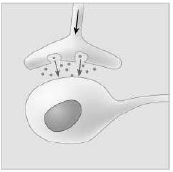Cell signaling is a crucial process for communication between cells in multicellular organisms, playing a vital role in maintaining homeostasis, which refers to the stable internal conditions necessary for survival. This communication can occur in two primary ways: direct and indirect signaling.
Direct cell signaling involves the transfer of signals between adjacent cells, allowing for immediate and localized responses. This type of signaling is essential for processes such as tissue repair and immune responses, where quick communication is necessary.
On the other hand, indirect cell signaling occurs when cells communicate over longer distances, often involving signaling molecules that travel through the bloodstream or extracellular fluid. This method is important for coordinating complex processes like growth, metabolism, and hormonal regulation.
Understanding these two types of cell signaling is fundamental for grasping how organisms maintain homeostasis and respond to their environment. In subsequent discussions, we will delve deeper into each type of signaling to explore their mechanisms and significance.


